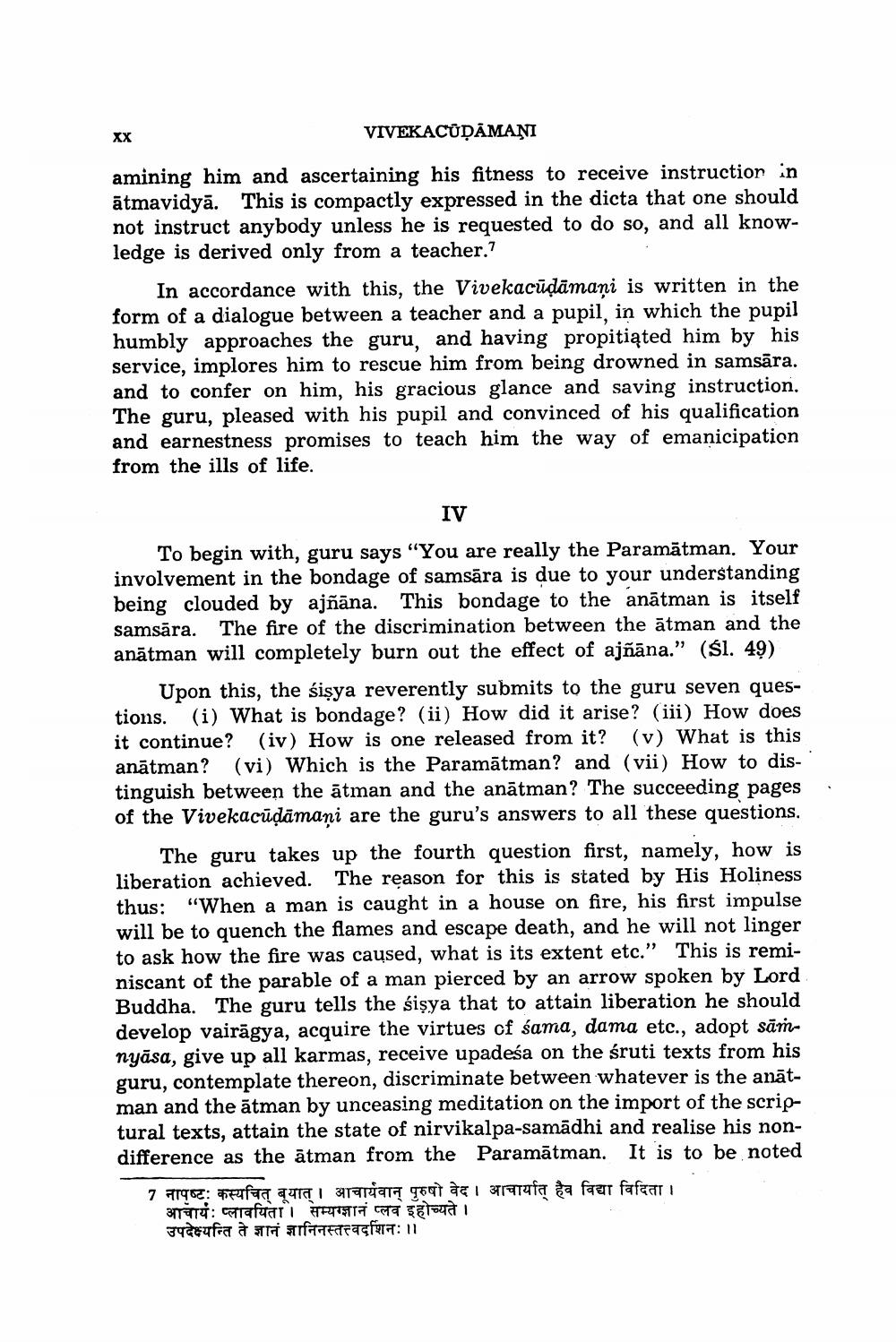________________
VIVEKACŪDĀMAŅI
amining him and ascertaining his fitness to receive instruction in ātmavidyā. This is compactly expressed in the dicta that one should not instruct anybody unless he is requested to do so, and all knowledge is derived only from a teacher.7
In accordance with this, the Vivekacūdāmaņi is written in the form of a dialogue between a teacher and a pupil, in which the pupil humbly approaches the guru, and having propitiated him by his service, implores him to rescue him from being drowned in samsāra. and to confer on him, his gracious glance and saving instruction, The guru, pleased with his pupil and convinced of his qualification and earnestness promises to teach him the way of emanicipation from the ills of life.
IV
To begin with, guru says "You are really the Paramātman. Your involvement in the bondage of samsāra is due to your understanding being clouded by ajñāna. This bondage to the anātman is itself samsāra. The fire of the discrimination between the ātman and the anātman will completely burn out the effect of ajñāna.” (Śl. 49)
Upon this, the śişya reverently submits to the guru seven questions. (i) What is bondage? (ii) How did it arise? (iii) How does it continue? (iv) How is one released from it? (v) What is this anātman? (vi) Which is the Paramātman? and (vii) How to distinguish between the ātman and the anātman? The succeeding pages. of the Vivekacūdāmani are the guru's answers to all these questions.
The guru takes up the fourth question first, namely, how is liberation achieved. The reason for this is stated by His Holiness thus: “When a man is caught in a house on fire, his first impulse will be to quench the flames and escape death, and he will not linger to ask how the fire was caused, what is its extent etc." This is reminiscant of the parable of a man pierced by an arrow spoken by Lord Buddha. The guru tells the sisya that to attain liberation he should develop vairāgya, acquire the virtues of sama, dama etc., adopt sāṁnyāsa, give up all karmas, receive upadeśa on the śruti texts from his guru, contemplate thereon, discriminate between whatever is the anātman and the ātman by unceasing meditation on the import of the scriptural texts, attain the state of nirvikalpa-samādhi and realise his nondifference as the ātman from the Paramātman. It is to be noted
7 नापष्टः कस्यचित् बूयात् । आचार्यवान् पुरुषो वेद । आचार्यात हैव विद्या विदिता।
आचार्य: प्लावयिता। सम्यग्ज्ञानं प्लव इहोच्यते । उपदेष्यन्ति ते ज्ञानं ज्ञानिनस्तत्त्वदर्शिनः ।।




